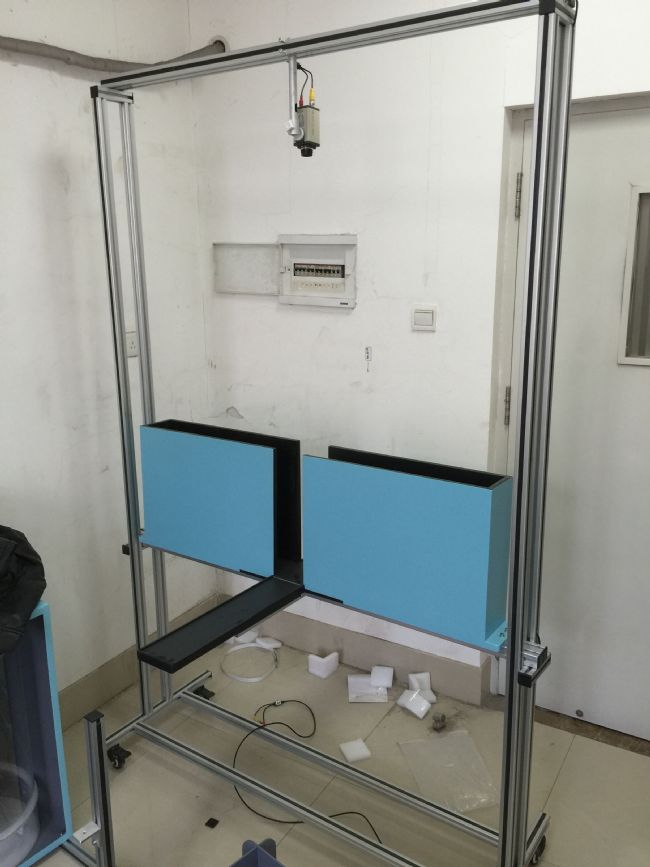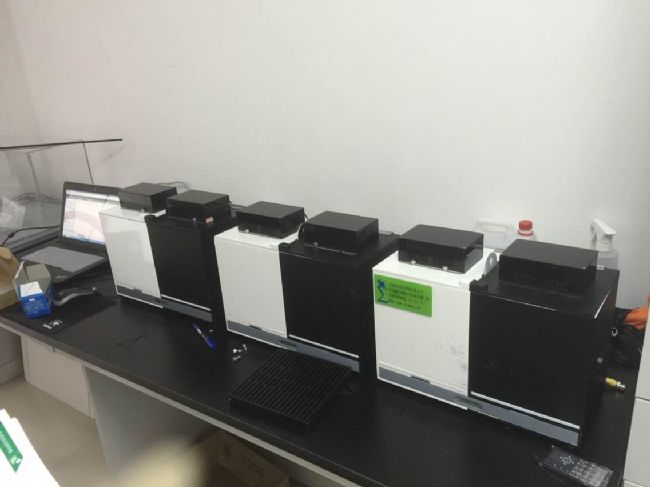The effect of elevated cross maze, light and dark box, and open field experiment-high salt diet on hippocampus expression in menopausal anxiety mice
Effect of high-salt diet on expression of potassium ion-chloride ion transporter 2 and sodium-potassium-chloride ion transporter-1 in hippocampus of menopausal anxiety mice ã€Abstract】Objective To study the effect of high-salt diet on the expression of potassium ion-chloride ion transporter 2 (KCC2) and sodium-potassium-chloride ion transporter 1 (NKCC1) in mice with menopausal anxiety. Methods Rats were randomly divided into blank group, model group, 4% high salt diet group and 8% high salt diet group. Among them, 4% high-salt diet group and 8% high-salt diet group were treated with high-salt diet for 1 month. The brain structure was observed by HE staining, and the expression of KCC2 and NKCC1 was observed by immunohistochemistry. Results The high-salt diet disordered the pyramidal cells in the hippocampus of menopausal anxiety mice, the number of neurons was significantly reduced, the cell outline was blurred, a large number of vacuoles appeared, the cell morphology was irregular, and the cell gap was significantly increased. The expression of KCC2 in the model group The positive cells were significantly reduced, and the positive cells in the high-salt diet group were rare. The positive cells of NKCC1 expression in the model group were significantly increased, and the positive cells in the high-salt diet group were more obvious. Conclusion The high salt diet aggravates the occurrence of menopausal anxiety disorder and may be related to the breaking of the dynamic balance between KCC2 and NKCC1. [Key words] high salt diet; menopausal anxiety; potassium ion-chloride ion cotransporter 2; sodium-potassium-chloride ion cotransporter 1 Menopausal anxiety not only affects patients' health, social relationships, family life, etc., but also causes other mental disorders and even suicidal behaviors, and is directly related to the occurrence of senile diseases. Therefore, its prevention and treatment research is an important task faced by clinical medical staff and the whole society. With the increase of age, people's taste function declines, and in daily life, it is characterized by heavy salty taste. Studies have shown that per capita salt intake and per capita salt intake per capita in China exceeds the standard. This study was to investigate the effects of high-salt diet on potassium ion-chloride ion transporter 2 (KCC2) and sodium-potassium-chloride ion transporter 1 (NKCC1) in menopausal anxiety mice. 1 Materials and methods 1. 1 Experimental animals: Kunming female mice of 11 months old, clean grade, weighing 35-45 g, purchased by Dongchuang Experimental Animal Science and Technology Service Department, Kaifu District, Changsha City, animal certificate number: scxk(湘) 2009- 0012. The feed was from the Dongchuang Experimental Animal Science and Technology Service Department of Kaifu District, Changsha City. 1. 2 Reagents and instruments Sheep anti-mouse KCC2, NKCC1 polyclonal antibody was purchased from Sigma, USA. Low temperature large capacity high speed centrifuge (Model: KDC-2046 low temperature large capacity centrifuge, University of Science and Technology of China Science and Technology Industrial Co., Ltd.); Electronic balance (Model: ES-C-600 Electronic Balance, Xiangyi Tianping Instrument Co., Ltd.). 1. 3 The mice were vaginal smear for 5 consecutive days, and the mice with irregular estrous cycle were natural menopausal mice. Forty menopausal mice were randomly divided into a blank group, a model group, a 4% high-salt diet group, and an 8% high-salt diet group. After grouping, the blank group and the model group mice continued to give ordinary feed. The 4% high-salt diet group was given 4% NaCl high-salt pellet feed, and the 8% high-salt diet group was given 8% NaCl high. Salt pellets are fed, fed freely, and free to drink tap water for 1 month. 1. 4 Experimental instruments 1 elevated cross maze model 2 bright and dark box 3 market experiments are provided by Shanghai Xinsoft Information Technology Co., Ltd. 1. 5 HE staining experiment was taken on the 31st day, the brain was taken by anesthesia, 4% paraformaldehyde was fixed, embedded in paraffin, routine HE staining, dehydrated and transparently sealed, and sliced ​​and observed under light microscope. 1. 6 On the 31st day of immunohistochemistry, the brain was taken, anesthetized and perfused, and 4% paraformaldehyde was fixed. After dehydration, transparency and embedding, the coronal position of hippocampus was selected and frozen sections were selected. Immunohistochemistry by SABC method: Add 0.3% H2O210 min, 3% normal goat serum for 10 min; add primary antibody (1:100), overnight (negative control group replaces primary antibody with normal sheep serum), add Sheep anti-rabbit Ig G, SABC, placed at room temperature for 2 h, rinsing and rinsing, DAB coloring agent color development, dehydration, and sealing. Three sections were taken from each rat, and three expressions of NKCC1 and KCC2 in the hippocampus were observed under microscope (×400). 1. 7 Statistical methods The comparison between groups is performed by t test. 2 results 2. 1 Effect of high salt diet on brain structure of mice with menopausal anxiety The cells in the hippocampus of the blank group were arranged neatly, the nucleus was round and large, the nucleolus was clearly visible, the pyramidal cells were arranged neatly and the levels were tight. The pyramidal cells in the hippocampus of the model group were arranged in a disordered manner, the number of neurons was reduced, and the cell outline was clear and empty. Bubble phenomenon, cell morphology is irregular, cell gap is relatively increased; hippocampus pyramidal cells in the high-salt diet group are disordered, the number of neurons is significantly reduced, the cell outline is blurred, a large number of vacuoles appear, cell morphology is irregular, cell gap Significantly increased, the 8% high-salt diet group was more pronounced than the 4% high-salt diet group. 2. 2 Effect of high salt diet on KCC2 expression in hippocampus of mice with menopausal anxiety Under high power optical microscope, the positive staining of cells was observed. Compared with the blank group, the positive cells of KCC2 expression in the model group were significantly reduced, and the positive cells in the high salt diet group were few, and there was no significant difference between the 4% and 8% high salt groups. . 2. 3 Effect of high salt diet on NKCC1 expression in hippocampus of mice with menopausal anxiety Under high power optical microscope, the positive staining of cells in the field of view was observed. Compared with the blank group, the positive cells of NKCC1 expression in the model group increased significantly, and the positive cells in the high salt diet group increased more significantly, but between the 4% and 8% high salt groups. There are no obvious differences. Discuss A reasonable diet structure is one of the central contents of diet care in modern Chinese medicine nursing. At present, a reasonable diet structure is advocated, although it varies according to the physical condition of each person, but in general, preference should be avoided first. Early ancient medical doctors have emphasized that the diet should not be too salty, and should eat less salt. The modern literature also reports that food is related to people's emotions, such as salty and sweet taste, excessive intake of salt and sugar, and emotional excitement. Australian scholars have followed the results of 10 years of follow-up surveys, showing that there is a close relationship between diet structure and mental disorders such as depression and anxiety. The transport protein of KCC2 distributed on the cell membrane of neurons is the main factor of chloride ion efflux in neuronal cells, which causes Cl- to move from intracellular to extracellular, reducing intracellular Cl- concentration; NKCC1 is distributed in epithelial cells and non- On the epithelial cell membrane, along the inward Na gradient, Cl- is moved from the outside to the cell to promote intracellular Cl- accumulation, so the dynamic equilibrium between the Cl-extraction system (KCC2) and the Cl-aggregation system (NKCC1) is determined. [Cl-]i in the central nervous system. The key factor for the conversion between γ-aminobutyric acid (GA-BA) to produce excitatory and inhibitory effects is the poor concentration of Cl- in neuronal cells, while the functionally opposite chloride co-transporter KCC2 / NKCC1 is the central nervous system. The key factors regulating the difference of Cl- concentration and regulating the transformation of GABA effect in the system. Studies have shown that in KCC2 knockout rats, the inhibition of GABA in the brain is decreased. Increased expression of NKCC1 mRNA and decreased expression of KCC2 mRNA may cause an increase in Cl-concentration in neurons, a collapse of Cl-gradient, a decrease in Cl-influx, a decrease in superficial membrane, and a decrease in GABAergic inhibition and high neuronal activity. Excitability increases the susceptibility to epilepsy. In the early stage of the project, the ECM and elevated plus maze were used to successfully prepare the anxiety model. The high-salt diet can aggravate the anxiety of the animal and reduce the number of activities. The results of this study show that the high-salt diet aggravates the occurrence of menopausal anxiety disorder and the high-salt diet makes the cells The levels of Na+ and Cl- inside and outside changed, and the dynamic balance between KCC2 and NKCC1 was broken, but the specific mechanism needs further study.
Sorghum rice generally contains 60%-70% starch. Each 100g sorghum rice contains 8.4g protein, 2.7g fat, 75.6g carbohydrate, 7mg calcium, 0.3g crude fiber, 0.4g ash, 17mg calcium, 188mg phosphorus, Iron 4.1mg, thiamine 0.14mg, riboflavin 0.07mg, niacin 0.6mg, vitamin B10.26mg, vitamin B20.09mg. The calorific value per hectogram of sorghum meters is 1525.7 kilojoules.
Jilin Yomi Agricultural and Sideline Products Import and Export Co.LTD. focusing on building a green base, building a characteristic industrial chain, deepening the channel supply chain, vigorously developing export trade, and leading the development direction of the entire industry; insisting on green development, promoting the concept of health, and making every effort to build a national leading enterprise in the organic grain industry.
Sorghum,Sorghum Rice,Sorghum Edible,Sorghum Rice Grain Yomifresh , https://www.yomifresh.com

